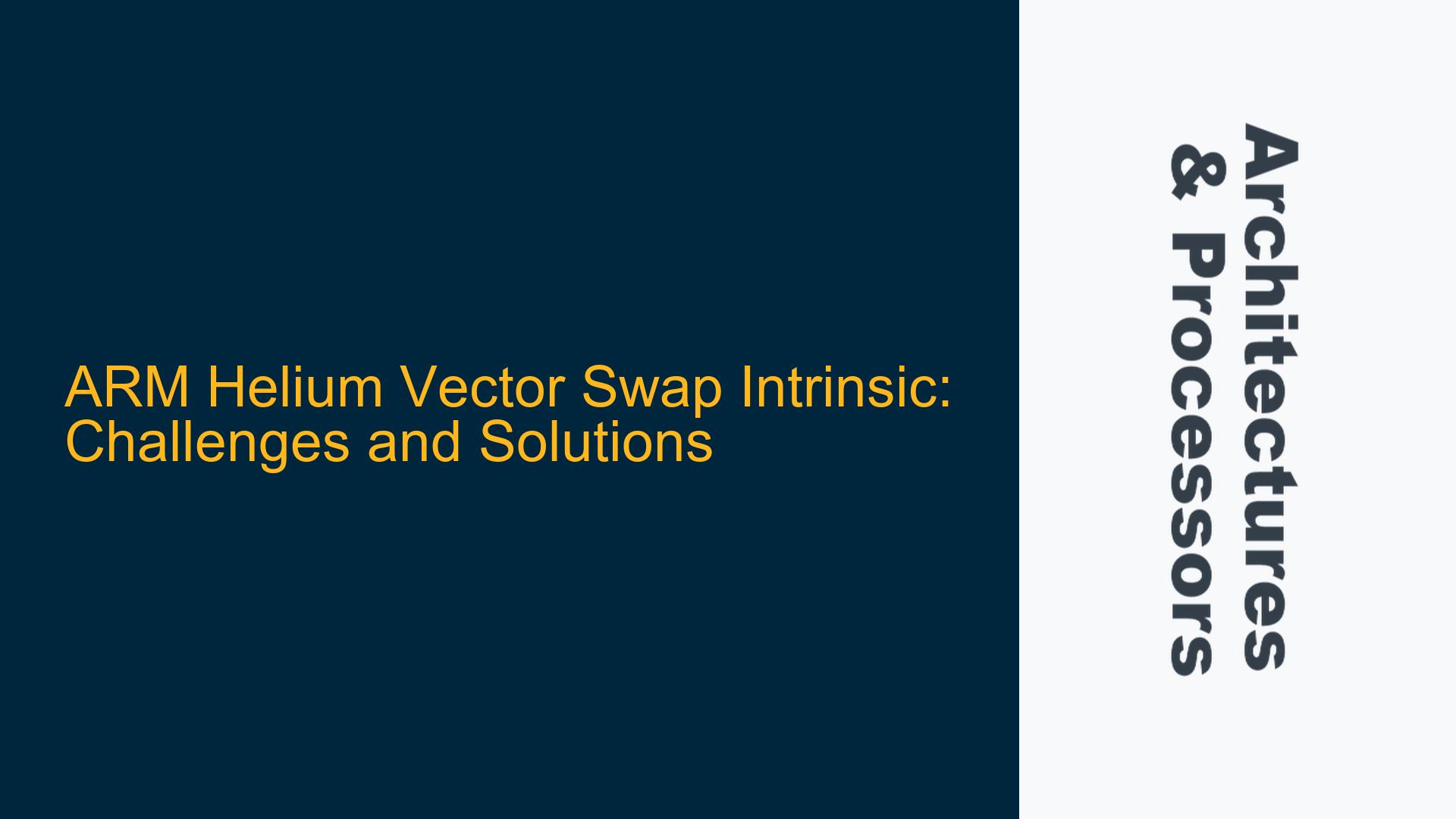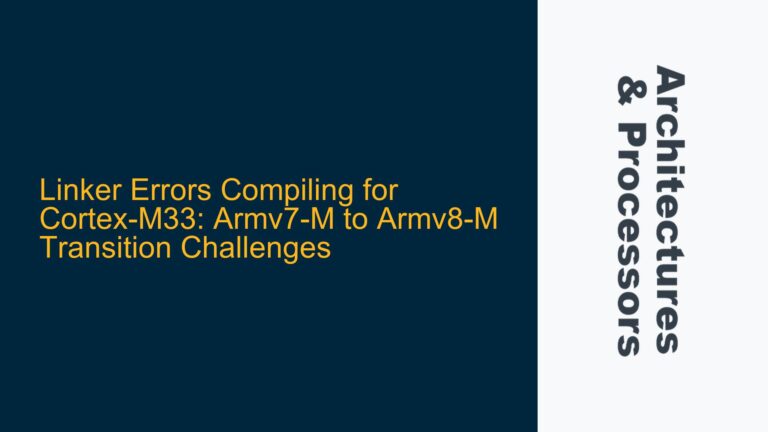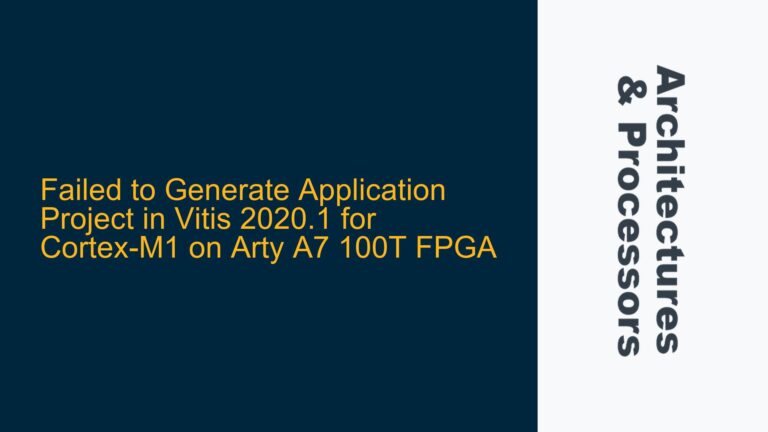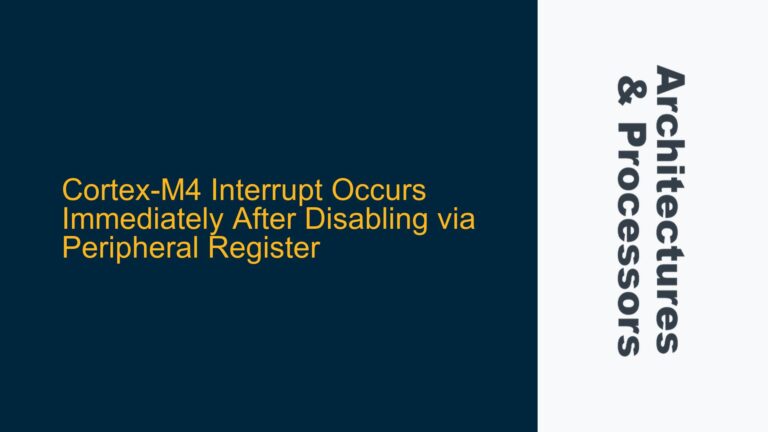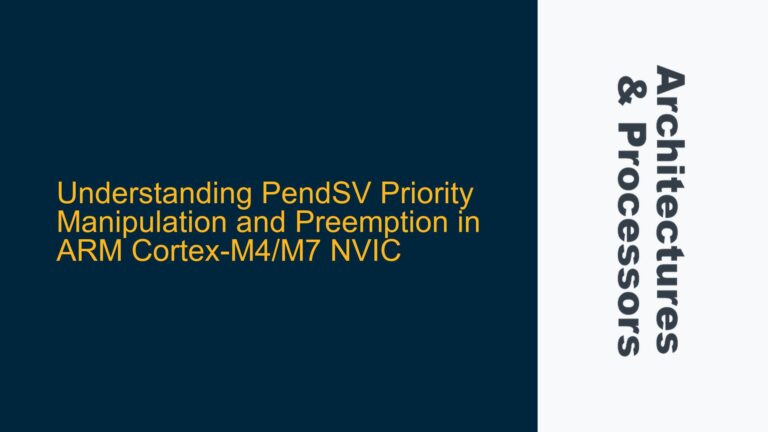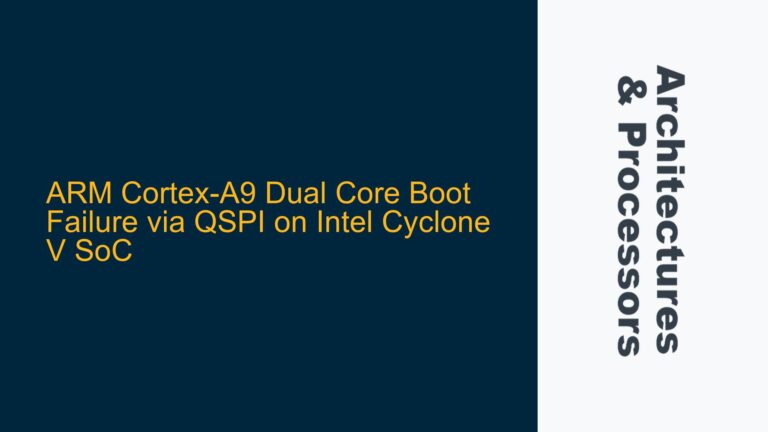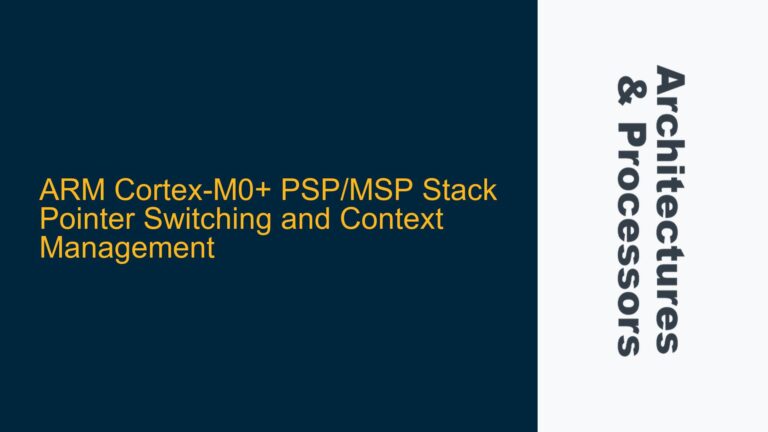ARM Helium Vector Swap Intrinsic: Understanding the Core Issue
The ARM Helium architecture, also known as the M-Profile Vector Extension (MVE), introduces a powerful set of vector processing capabilities designed to enhance the performance of embedded systems. One of the key features of Helium is its ability to perform operations on vectors, which are essentially arrays of data elements processed in parallel. However, a recurring challenge faced by developers working with Helium is the lack of a dedicated intrinsic or instruction to swap elements within a vector. This issue is particularly relevant when developers need to rearrange data within a vector for algorithms that require specific element ordering, such as matrix transposition, FFTs, or data shuffling.
The core of the problem lies in the fact that while ARM Helium provides intrinsics for reversing byte order within elements (e.g., VREV16, VREV32, VREV64), there is no single intrinsic that can swap elements across the entire vector. For example, if a developer has a vector Q1 containing elements [A, B, C, D], there is no direct way to transform it into [B, A, D, C] or [D, C, B, A] using a single instruction. This limitation forces developers to resort to workarounds, such as loading and storing data to memory or using multiple instructions to achieve the desired result, which can lead to inefficiencies in both code size and execution time.
The absence of a vector swap intrinsic is particularly noticeable when compared to other architectures like ARM NEON, which provides more comprehensive support for vector manipulation. In NEON, for instance, the VREV instruction can reverse the order of elements in a vector, but Helium lacks an equivalent instruction. This discrepancy highlights a gap in the Helium instruction set that can impact the performance and flexibility of vector-based algorithms.
Memory Access Patterns and Predicate-Based Shifts: Potential Workarounds
Given the lack of a dedicated vector swap intrinsic in ARM Helium, developers must explore alternative approaches to achieve the desired element reordering. One such approach involves leveraging memory access patterns and predicate-based shifts. Predicates in Helium allow for conditional execution of instructions based on specific conditions, which can be used to selectively manipulate elements within a vector.
For example, consider a vector Q1 containing four 32-bit elements [A, B, C, D]. To swap the first two elements (A and B), a developer could use a combination of predicates and shifts. The process would involve creating a predicate that selects the first two elements, shifting them within the vector, and then merging the results back into the original vector. While this approach can achieve the desired result, it requires multiple instructions and careful management of predicates, which can complicate the code and reduce its readability.
Another potential workaround involves using memory as an intermediary for element swapping. In this approach, the vector is first stored in memory, and then the elements are rearranged using load and store operations. For instance, to swap elements A and B in vector Q1, the developer could store Q1 to memory, load the elements into separate registers, swap them, and then store them back into the vector. While this method is straightforward, it introduces additional memory access overhead, which can be detrimental to performance, especially in real-time embedded systems where memory bandwidth is often a limiting factor.
The use of memory as an intermediary also raises concerns about cache coherency and data synchronization, particularly in systems with multiple cores or DMA engines. Ensuring that the swapped data is correctly synchronized across different memory hierarchies can add complexity to the implementation and potentially introduce bugs if not handled properly.
Implementing Vector Swaps with VREVx Instructions and Custom Intrinsics
Despite the lack of a dedicated vector swap intrinsic, ARM Helium provides a set of instructions that can be used to reverse the byte order within elements, such as VREV16, VREV32, and VREV64. These instructions can be leveraged to implement custom vector swap operations, albeit with some limitations. For example, the VREV64 instruction can reverse the byte order within 64-bit chunks of a vector, which can be useful for certain types of element swaps.
Consider a vector Q1 containing four 32-bit elements [A, B, C, D]. Applying the VREV64 instruction to Q1 would reverse the byte order within each 64-bit chunk, resulting in a vector [B, A, D, C]. While this achieves a partial swap, it does not provide the flexibility to swap arbitrary elements within the vector. To achieve more complex swaps, developers can combine multiple VREVx instructions with other vector operations, such as shifts and permutations.
For example, to swap the first and third elements (A and C) in vector Q1, a developer could use the following sequence of instructions:
- Apply
VREV64to reverse the byte order within 64-bit chunks, resulting in[B, A, D, C]. - Use a shift operation to move the third element (
D) to the first position, resulting in[D, A, B, C]. - Apply another
VREV64to reverse the byte order again, resulting in[A, D, C, B]. - Use a final shift operation to move the second element (
D) to the third position, resulting in[A, B, D, C].
While this approach can achieve the desired result, it requires multiple instructions and careful management of intermediate results, which can be error-prone and inefficient. To address these challenges, developers can create custom intrinsics that encapsulate the sequence of operations required for specific types of swaps. These custom intrinsics can then be reused across different parts of the codebase, improving both code readability and maintainability.
In addition to using VREVx instructions, developers can also explore the use of Helium’s permutation instructions, such as VTRN and VZIP, which can be used to rearrange elements within a vector. For example, the VTRN instruction can be used to transpose pairs of elements within a vector, which can be useful for certain types of swaps. However, these instructions are not as flexible as a dedicated vector swap intrinsic and may require additional operations to achieve the desired result.
Performance Considerations and Optimization Strategies
When implementing vector swaps in ARM Helium, developers must carefully consider the performance implications of their chosen approach. The use of multiple instructions, memory accesses, and predicates can introduce significant overhead, particularly in performance-critical applications. To mitigate these issues, developers should focus on optimizing their code for both execution time and memory bandwidth.
One key optimization strategy is to minimize the number of memory accesses required for element swapping. This can be achieved by keeping the vector in registers for as long as possible and only storing it to memory when absolutely necessary. Additionally, developers should aim to reduce the number of instructions required for each swap by leveraging Helium’s vector processing capabilities to their fullest extent.
Another important consideration is the impact of vector swaps on cache coherency and data synchronization. In systems with multiple cores or DMA engines, it is essential to ensure that the swapped data is correctly synchronized across different memory hierarchies. This can be achieved by using memory barriers and cache management instructions, such as DSB (Data Synchronization Barrier) and DMB (Data Memory Barrier), to ensure that all cores and DMA engines have a consistent view of the data.
Finally, developers should consider the impact of vector swaps on code size and maintainability. While custom intrinsics can improve code readability and reuse, they can also increase the size of the codebase, particularly if multiple variations of the same swap operation are required. To address this issue, developers should aim to create generic swap intrinsics that can handle a wide range of element reordering scenarios, reducing the need for multiple specialized implementations.
Conclusion: Navigating the Challenges of Vector Swaps in ARM Helium
The lack of a dedicated vector swap intrinsic in ARM Helium presents a significant challenge for developers working with vector-based algorithms. However, by leveraging the available VREVx instructions, predicates, and custom intrinsics, developers can implement efficient and flexible vector swap operations that meet the requirements of their applications. Careful consideration of performance, memory access patterns, and code maintainability is essential to ensure that these implementations are both efficient and robust.
As the ARM Helium architecture continues to evolve, it is likely that future iterations will address this gap by introducing more comprehensive support for vector manipulation. In the meantime, developers must rely on the tools and techniques available to them, pushing the boundaries of what is possible with the current instruction set. By doing so, they can unlock the full potential of ARM Helium and deliver high-performance embedded systems that meet the demands of modern applications.
